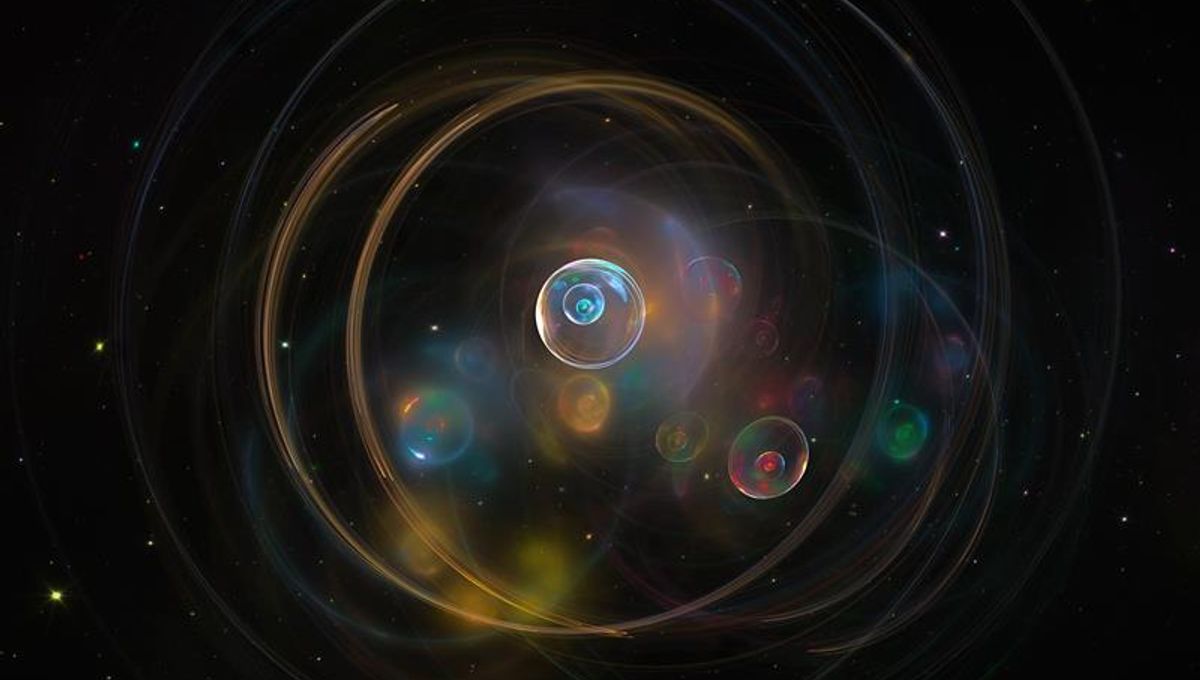
The ATLAS collaboration at the Large Hadron Collider (LHC), the particle accelerator at CERN, has a big announcement: They have observed top quarks in the collision between lead ions for the very first time. This observation is another step forward in understanding the conditions present just a fraction of a second after the beginning of the Universe.
At that point, the whole cosmos was in a state called the quark-gluon plasma. Quarks are fundamental particles that make up (among other things) the protons and neutrons at the core of atoms. Gluons are the mediators of the strong nuclear force, one of the four fundamental forces in the universe – as the name suggests, gluons make quarks stick together.
There are six types of quarks. Up and down quarks are found in protons and neutrons. The other four (charm, strange, top, and bottom) are only seen after very energetic events, as they are not stable.
The top quark is the heaviest of them all – it has the same mass as a caffeine molecule, without being as fundamental to human productivity. It’s also the least stable, decaying in just 5×10−25 seconds. That interval is to one second like one second is to 100 million times the age of the universe. Calling it an extremely short period is almost an understatement.
This short period is crucial to the experiment in question. The quark-gluon plasma survives for around 10−23 seconds, which is at least 10 times higher than the time it takes for a top quark to form and then decay. This means that scientists can use top quarks formed at different times during the existence of the quark-gluon plasma to probe the evolution of the plasma itself. The top quark becomes a time marker.
If this was not already cool enough, the team believes they can also use the top quark to understand how the momentum is distributed within protons and neutrons moving: is it shared equally between the quarks and gluons that make the atomic nuclei?
Top quarks decay into a W boson and a bottom quark. The W boson is the mediator of the weak nuclear force and it decays into an electron or a muon and its corresponding neutrino. There is also a possibility for W boson to decay into quarks, but that pathway has not been explored in this detection. It will be part of future observations when researchers begin to quantify the evolution of the quark-gluon plasma in earnest.
The results were presented at a talk at CERN and the results of the observations are publicly available here.
Source Link: World First As Top Quarks Created In Collision Between Lead Atoms Observed